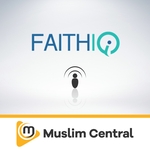Muslims came in to the West Indies and Caribbean region in the Atlantic slave trade. We now know that 15%-30% of the slaves were practicing Islam. How did Islam and the Muslims themselves help shape the region?
Shaykh Abdullah Hakim Quick answers.

Muslims came in to the West Indies and Caribbean region in the Atlantic slave trade. We now know that 15%-30% of the slaves were practicing Islam. How did Islam and the Muslims themselves help shape the region?
Shaykh Abdullah Hakim Quick answers.
How did Islam and Muslims helped to shape the West Indies Caribbean region.
Muslims came into the Caribbean region and the West Indies, in the Atlantic slave trade, and we recognize now from documented evidence that somewhere between 15 to 30% of these slaves and political prisoners were practicing Islam. They affected the society number one immediately, with a resistance, they resisted on the shores, they resisted, on the shoreline, they resisted on the boats. And when they came into the islands and into Central America, and South America, and the United States, they were also part of an amazing series of slave revolts, and resistances. That happened at that time.
One of the most famous incidents of this was in Haiti. And we know that Haiti was the first Republic, the first nation to break away from the colonial rule, they defeated the French. And they set an example for people who were resisting all over the world. Surprisingly enough, the revolts were begun by leaders on the plantations. Two of those leaders were Muslims. One was named Michael Dell, and the other named Bookman. They were known in the wall of Senegal, Senegalese language as Mara boo. In Arabic, we say rabbit, and these are scholars itinerate scholars who traveled to the countryside and will organize the people in the plantations to resist the slavery. This is an
amazing achievement. Because up until now, Haiti is a focus within the Caribbean region. We also recognize what is called Maroons, the maroon revolts the maroon societies, in Jamaica, in Suriname, in Mexico, in many parts of the Americas were actually slave societies where the people broke away from their slave masters liberated territory, and lived in that territory with their own constitution and with their own leadership in Jamaica, up until today, they are autonomous and independent on the island of Jamaica. Many of them were Muslims. in Trinidad, Mandingo societies were Muslims who freed themselves and they used to go to the boats and they freed Muslims who are
coming into the 19th century. Eunice Mohammed bath, Mohamed Sisi, these are some of the famous names and Trinidad of those who are part of the Mandingo society. And so all over the region. Muslims had a very strong influence on the culture with with their their their cultural practices, their purity, with their, their need for unity their belief in one God. They had a great influence on African societies and still have this influence up until today.